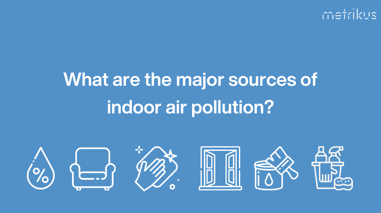Four ways to measure the sustainability of your company
Sustainability in business
Sustainability within business is a concern which is growing fast, and rightfully so. Investors are looking to replace their portfolios with sustainable investments, and more consumers are choosing to support businesses who have ESG considerations at the center of their ethos.
Why is it important for businesses to be sustainable?
Before we dive into it, let’s just recap why it’s so important for a business to be sustainable.
Conducting sustainable business is important to ensure the longevity of both your company and the environment. With recent news that there isn’t a credible pathway to a 1.5C limit in rising temperatures, the importance of minimizing ecological damage and building a circular economy is very clear.
Additionally, more investors are looking at companies’ sustainability indexes and ESG ratings as indicators of future performance: a study for Fidelity showed that over half of global ESG investments between 1970-2014 outperformed the market.
And BlackRock reported that over 80% of sustainable investment funds outperformed their counterparts during the COVID-19 pandemic. Placing business ethics and sustainability at the center of your company is very important to make sure that your business continues to perform well.
How to measure business sustainability
Measuring the sustainability of your business goes beyond carbon accounting. This is of course a crucial component that can indicate the overall environmental impact of your business, but obtaining actionable data on sustainability that will allow you to make improvements requires further depth.
Where are you losing energy efficiency? Are you optimizing your space? Is your capacity management inefficient?
Asking these questions allows you to explore the cause rather than the effect. And once the causes are identified it becomes possible to make improvements and track progress. The following section will provide depth on four avenues for sustainability in business – the causes. Start measuring these, and you’ll be well on track to paint a picture of the sustainability of your business.

1) How to measure the energy consumption of a business
Measuring energy consumption is the best place to start measuring the sustainability of your business. 28% of global emissions come from generating electricity, and for a lot of businesses energy is a large component of their carbon footprint. Measuring your energy consumption allows you to benchmark your company: the average usage for a commercial building is 22.5 kWh/square foot.
How do you compare? Where can you improve? Begin to measure, begin to improve.
A good starting point to measure your energy consumption is monitoring your meters. By taking regular readings you’ll be able to compare usage to previous periods. The output from the data is raw consumption however, and on its own is two dimensional – it won’t tell you a lot about actual performance.
The progression from here would be to install advanced meters: sub-meters to monitor specific areas and/or smart meters for live readings. The additional data points provided by advanced meters allow you to analyze energy consumption patterns and detect inefficiencies. Is there a power outage? Are you using abnormal levels of energy at a certain time? How much money is being spent on energy?
Aggregating the above data leads to the final step: using an Internet of Things (IoT) solution to deploy a full scale energy management system. An IoT solution can help to automate energy monitoring in your business and instantly implement measures to reduce your energy consumption.
The Metrikus energy monitoring solution, for example, uses various sensors to visualize energy consumption on top of other metrics such as occupancy and indoor air quality (IAQ). This provides a 360º understanding of your company’s energy usage. Inefficiencies are detected in real time and automatic adjustments are made, resulting in energy reductions of up to 25%.
2) How to measure indoor air quality in a building
Good IAQ drastically improves employee wellbeing and productivity, impacting the overall performance of your business.
Indoor air quality monitoring involves the measurement of pollutants such as CO2, PM2.5, TVOCs, and other metrics like temperature and humidity. There is ample evidence of the detrimental effects of the above pollutants on performance in the workplace.
High levels of CO2 increase drowsiness and reduce concentration and attention spans; a level of CO2 above 1000 ppm has the same impact on cognitive ability as drinking two pints of beer!
Aside from providing a measure of productivity in the workplace, monitoring indoor air quality can be a measure of sustainability by uncovering inefficiencies in your workplace. For example, they can reveal if HVAC sensors are incorrectly calibrated or your building management system is poorly configured.
IAQ is monitored with IoT sensors, and using an IAQ monitoring solution means that you can overlay data to reduce energy consumption.
If occupancy levels are low but temperature is beyond normal thresholds, you will receive alerts to let you know that HVAC systems are running despite the space being empty – ensuring that energy is only used when it’s actually needed.

3) How to measure occupancy
Space utilization refers to the management and optimization of your company’s physical space. 40% of office space is underused on a typical day, so developing a strategy to increase its efficiency will ensure that energy is not wasted running HVAC systems when not needed.
The way to measure the use of space is measuring occupancy. Using sensors, it is possible to gather data on the presence of people in your workplace in real time – down to exactly which desks and rooms are occupied or vacant.
IoT occupancy solutions can use the data from occupancy sensors to provide insights that reduce energy and increase efficiency. For example, it might recommend that you keep a second floor closed until the first reaches 90% capacity, and alerts you when it does. This ensures that your business is not spending unnecessary money on leasing and on energy.
Measuring occupancy levels and deploying a capacity management solution can give you an idea of how you are using your space. This is a relevant component of measuring the sustainability of your business.
4) How to measure ESG performance
Once you are underway with measuring the above metrics, it is a good idea to begin tracking your company’s overall ESG performance.
Environmental, social, and governance factors are all-encompassing measures of your company’s sustainability. As well as focusing on environmental factors, by monitoring ESG metrics you are able to determine changes in employee well-being, diversity in the workplace, access to reliable data and so on – and how each of these relates to and impacts the others.
Placing a focus on social and governance factors – on top of environmental – is key in ensuring the longevity, and thus sustainability, of your business.
Measuring ESG performance requires a variety of methods. Quantitative metrics – energy, water, and waste – can be measured using sensors whilst qualitative ones require different methods, like internal questionnaires and HR documents. Companies can work with ESG frameworks to disclose their data and receive an overall ESG score – useful for tracking and benchmarking progress, and planning a roadmap for improvement.
ESG IoT solutions will normally assist with the quantitative metrics within ESG. Sensors can be deployed to automatically collect utility and IAQ data, and the platforms will produce insights to optimize resource use. The data is then downloadable and can be uploaded directly to a third party ESG framework.
- Want to learn more about ESG reporting? Download our ESG whitepaper

Overall sustainable factors to consider measuring as a business
Measuring the sustainability of your business is the first necessary step in beginning to improve it. To summarize, here is a recap of the main factors to consider.
- Environmental factors:
- Any business activity that impacts the environment. In particular focusing on energy, fuels, waste, water, and CO2.
- Social factors:
- Factors that relate to employee health and well-being like indoor air quality and workplace space management.
- Governance factors:
- Open access to good quality, reliable data to ensure the transparent tracking of the progression in sustainability.
Looking for further assistance?
To measure the sustainability of your company it is necessary to dig deep and uncover the causes and uproot the inefficiencies. If you’d like to learn more about how to maximize the sustainability of your company, speak to an ESG expert now.



